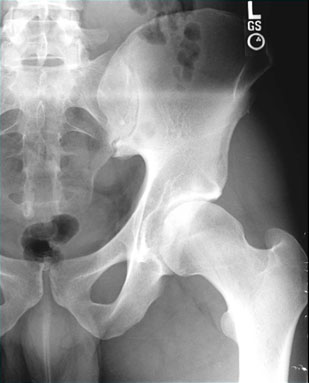

Surgeons at USC Orthopaedic Surgery are experts in arthroscopic surgery of the hip, carefully evaluating and treating patients with various pathologies, including labral tears.
Patient Selection
Most patients (80-90%) who are eligible for arthroscopic labral repair are those with femoroacetabular impingement (FAI), where bony malformations of the femoral head or acetabulum cause misalignment of the joint, which can predispose the patient to labral tears.
Who is a candidate for arthroscopic labral repair?
- Intra-articular hip pain presenting as frontal deep groin pain
- Mechanical symptoms – clicking, popping, catching
- Normal joint space on weight-bearing radiographic image
- No signs of degenerative changes in hip joint on imaging
- Usually have femoral acetabular impingement
- Evidence of torn labrum on MRI
Patients with FAI are usually young and very athletic.1 If patients have persistent symptoms after conservative management (physiotherapy, and/or anti-inflammatory medication), surgeons at Keck Medicine of USC will strongly consider arthroscopic labral repair, as these patients usually benefit from surgery earlier in the disease course.2,3 At the time of arthroscopic surgery, the bony malformations causing FAI are also removed, to reduce the likelihood of recurrent labral tearing secondary to FAI.
Studies by faculty at USC Orthopaedic Surgery showed that patients with Tönnis grade two or greater (those with some hip joint degeneration) who underwent arthroscopic labral repair had significantly worse outcomes that patients with Tönnis grade 1 or 0.2


After Care
Arthroscopic labral repair is performed on an outpatient basis. Our post-surgical care includes early range of motion exercises.4 The day after surgery, patients begin physiotherapy with cycling on a stationary bike. Over the next several months, patients increase their activity level, from light strength training at six weeks, to light jogging at three months, resuming all activity at six months.5
We have an extensive network of trusted physiotherapists all over Southern California, so patients can be seen close to home for their post-operative recovery and rehabilitation.
Treating Complex Labral Pathology
Our surgeons are also experienced with treating complex issues of the labrum, from revision surgery to labral reconstruction. In a labral reconstruction, a labral allograft is constructed and used to fill in a defect in the patient's labrum via an arthroscopic technique. Patients undergoing labral reconstruction often have had a prior hip arthroscopy but still have persistent pain. Revision surgery should be performed at tertiary medical centers, such as Keck Medicine of USC, where patients can find surgeons with extensive experience in the procedure.
REFERENCES
- Weber AE, Bedi A, Tibor LM, Zaltz I, Larson CM. The hyperflexible hip: Managing hip pain in the dancer and gymnast. Sports Health. 2015;7:346-358.
- Cvetanovich GL, Weber AE, Kuhns BD, et al. Hip arthroscopic surgery for femoroacetabular impingement with capsular management: Factors associated with achieving clinically significant outcomes. Am J Sports Med. 2018;46:288-296.
- Cvetanovich GL, Weber AE, Kuhns BD, et al. Clinically meaningful improvements after hip arthroscopy for femoroacetabular impingement in adolescent and young adult patients regardless of gender. J Pediatr Orthop. 2018;38:465-470.
- Kuhns BD, Weber AE, Batko B, Nho SJ, Stegemann C. A four-phase physical therapy regimen for returning athletes to sport following hip arthroscopy for femoroacetabular impingement with routine capsular closure. Int J Sports Phys Ther. 2017;12(683-696).
- Weber AE, Kuhns BD, Cvetanovich GL, Grzybowski JS, Salata MJ, Nho SJ. Amateur and recreational athletes return to sport at a high rate following hip arthroscopy for femoroacetabular impingement. Arthroscopy. 2017;33:748-755.
